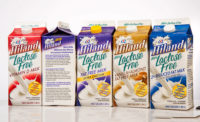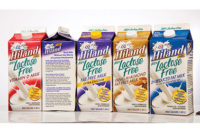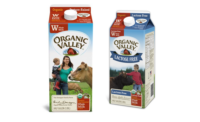I strongly believe in the strength of good dairy packaging design and how the design has the power to drive the brand and make the sale.
Dairies are often hesitant, for a multitude of reasons, to make changes to a package design or a company logo. But with the Food and Drug Administration’s move to update nutrition labels, change is imminent. That makes this the ideal time to re-evaluate your brand and insure your design communicates a premium, quality, healthy and competitive image.
Specifically, a quality design should:
- attract the consumer to your product
- quickly inform them about what’s most important
- differentiate your product from the others, and
- compel the consumer to purchase.
A packaging redesign means it is time to review your company’s brand history and current image, and then establish new brand objectives. When we’re called on to do a package design or redesign, we look to partner with our client and be extremely thorough so there aren’t any surprises along the way. We look at the category and the competition, do store checks with the sales team, learn about current customers and conduct a complete brand packaging audit. We also take into consideration the plant operations, existing equipment, packaging suppliers and current printing specifications. Nothing should be left to chance.
So when you embark on a design project, be ready to communicate and collaborate. The result will be a great design that meets your objectives, successfully conveys your brand’s attributes and sells the product.
Stop being complacent
The dairy category has been complacent for too long. Some of that complacency has led to nondairy beverages like soy milk and almond milk taking market share from dairy milk. To help stop the decline in milk sales and boost other dairy categories, we have to surpass the mindset of the operation-driven dairy to one that is innovative and forward thinking.
We also need to think about new ways to use dairy to drive growth and increase consumption. Like several dairies, Hiland has done a good job in this area by offering iced coffees, Greek yogurt and seasonal flavored milks. The categories have created new revenue streams and forced consumers to think differently about dairy.
Know thy consumer
Know your target audience and know what’s important to them. With this knowledge, the features, benefits and voice of your brand can be communicated on your packaging and that will resonate with your audience.
Naturally, the most important and unique features and benefits should appear on the front, or principle display panel. Tapping into what’s most meaningful with consumers is important as well. Right now, it’s all about promoting the product’s health benefits.
We can take a tip from the recently launched ad campaign by the Milk Processor Education Program. MilkPEP’s strategy is to inform consumers about milk’s protein content and the benefit of protein. When your packaging is redesigned, it would be wise to play off the strength of the campaign and bring information about protein and added consumer benefits to the forefront.
The front panel (or label, as in the case of gallon and half-gallon jugs) is critical to your logo, your product’s name, and key features and benefits. However the side panels, back labels or wraparounds, are also critical. These areas offer packaging real estate where you can tell your brand story, talk more about the product, talk about product usage or elaborate on features and benefits. They are real brand-building areas and should never go to waste.
The changes to the nutrition label on the majority of packaged foods will have everyone heading back to the printer. Hopefully, everyone in the dairy category will see this as an opportunity to make changes where they’re needed so that we’ll see the emergence of innovative, on-target and memorable packaging design that increases sales.
7 thoughts about keeping it simple
- Packaging design is critical to driving your brand.
- Branded packaging enhances the shopping experience and improves how a consumer feels about the product.
- Consumers respond well when the brand message comes through on the packaging. It creates a bond between the product and the brand.
- Consumers will look at a product for about six seconds. Your brand, and its benefits, must be conveyed quickly.
- Images, colors, shapes and copy play a vital role in communicating your specific product line and flavor options.
- Well-branded packaging can be the great point of difference that makes a product stand out from others in its category.
- Keep your packaging and the brand image clear and simple.







